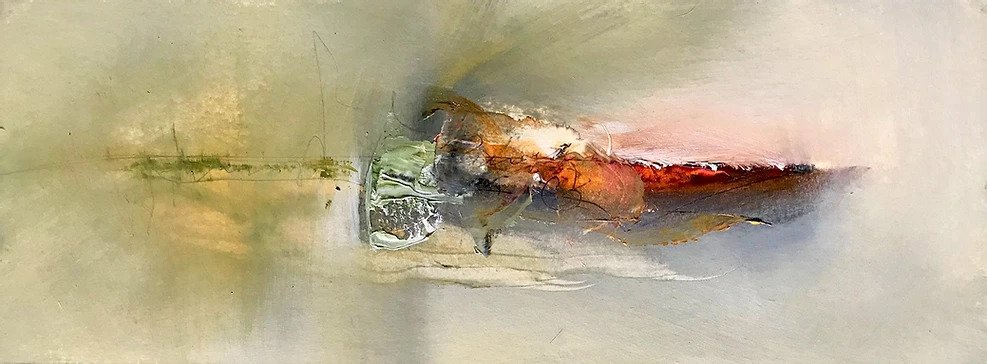

Writing Task – Image – Seeing
Viewing
In terms of Mitchell’s taxonomy of the image I categorise my work as both graphic and mental. Graphic image as it is a picture/painting, an object with the sole purpose of communicating visual information. It is understood in art history in terms of the materials and tools which are used in a particular way to produce an image to be viewed.
I could also categorise my work as mental image as it can evoke and realise remembered, dreamt or imagined imagery. Particularly the images of my landscape pieces which are also produced from my own imagined and remembered sense of place and then viewed through others autobiographies. Mitchell describes this: ‘The faculty of memory stores an archive of images and produces, of course, a world of images as well’. (Mitchell, 2009) However, my recent paintings have become increasingly abstracted and non representational so there it may be assumed that there is less scope for others to interpret through their remembered or imagined responses. The work becomes less evocative of memory and more of an aesthetic concerned with colour and form rather than place related interpretations and yet there is still tendency to make sense and translate the marks to things or beings. Elkins refers to the human trait of seeing bodies within art and our visual world ‘Every picture is a picture of the body. Every work of visual art is a representation of the body. To say this is to say that we see bodies, even where there are none… a splash of paint or a ruled grid can be a picture of the body’. (Elkins, 1999)
Making
In the making process I set out to reduce conscious thought often by removing visual cues. I experimented producing blind drawings and mark making techniques such as printmaking which produced interesting outcomes. However I found it almost impossible to work in this way when using paint where form comes into play which seems very different from the line produced with graphite or ink. Paint requires thought, however fleeting as the pigment seems entirely reliant on vision to communicate to me. Colour is an effect of light emitted, transmitted or reflected from a surface and does not exist without the viewers eye. This is arguably intrinsic to both the making and viewing of painting as the removal of colour reduces the image to form and tone alone much like the graphite marks. This has raised questions relating to aesthetics and colour in relation to painting my practice.
References
Mitchell, W. (2009). Iconology. Chicago: Univ. of Chicago Press.
Elkins, J. (1999). Pictures of the Body – Logic and Effect. 1st ed. [ebook] p.22. Available at: https://www.academia.edu/3116807/Pictures_of_the_Body_Affect_and_Logic_opening_preface_introduction [Accessed 22 Feb. 2020].

Recent Comments